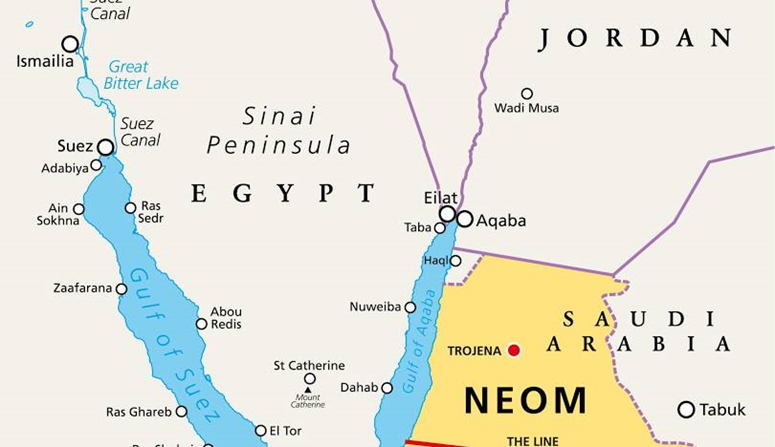Sinai peninsula

The Sinai Peninsula is located on the continent of Asia, and it is part of Egyptian territory. Sinai was known in ancient Egyptian texts as (Ta Mafakat), meaning: (Land of Turquoise), and: (Khast Mafakat), meaning, (Turquoise Desert) and (Khtiu). Mafakat), meaning: (Turquoise Terraces), and: (Go Mafakat), meaning: (Turquoise Mountain), also known as (Ta Shesmet), meaning: (Land of Green Metal). Since ancient times, Sinai has had historical, religious, economic, and military importance, as it included... Its land is one of the oldest military roads in the history of the ancient world...the Horus Military Road. The copper tools that were found dating back to the prehistoric era indicate the importance of the Sinai mines in this early period of Egypt’s history. With the beginning of the First Dynasty in Egypt, copper and turquoise continued to be extracted from Sinai, and it also witnessed great interest in the Old Kingdom era.
Two inscriptions were found relating to King Sankhet, and an inscription was also found from the reign of King Djoser, representing him striking the enemy and in front of him a person bearing the title (Army Commander).
During the reign of his son, “Sekhemkhet,” an inscription was found in Wadi al-Maghara. King Senefru was interested in securing mines and quarries, and working to achieve stability in Sinai. Texts were also found in Wadi al-Maghara in Sinai indicating the interest of the Fifth Dynasty kings in investing in mines and quarries, and insuring at the same time. .
This is evidenced by inscriptions bearing the names of the kings Sahure, Ni, Serre, and Kare Essi, which are currently on display in the Egyptian Museum in Cairo. During the era of the Middle Kingdom, great attention was paid to the eastern borders, so King Amenemhat I erected fortifications known as (the Prince’s Wall) or (the Ruler’s Walls). During the era of the modern state, Sinai no longer had merely an economic role represented in trade across its lands, or in exploiting its mines and quarries. Rather, it became inevitable for it to play a military role commensurate with what was happening on the scene of events in the ancient East region, where many castles and forts were erected. The deity Hathor was a sacred symbol in Sinai and was called the Lady of Turquoise. Along with Hathor there was the deity “Sobed”, one of the most important sacred symbols in the eastern Delta (in Saft al-Hanna near Zagazig). Attached is one of the artifacts discovered in Sinai from the collection of the Egyptian Museum. A painting of King Ramesses I. Pictures of the king offering sacrifices to the deity Set. Limestone family 19 - Tharu Habwa Castle.
Source: websites

